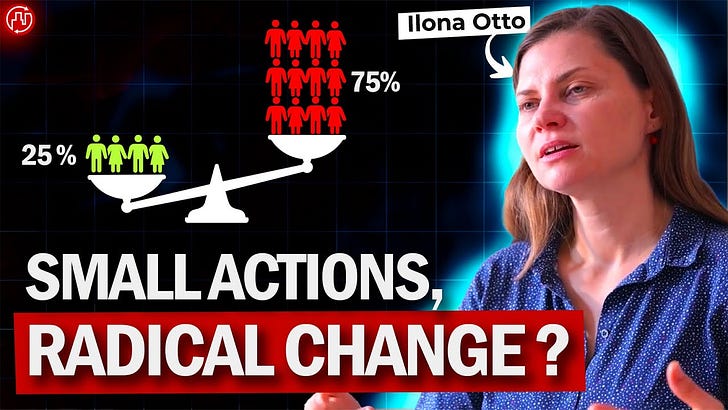There is an essential and yet poorly understood concept in climate science: tipping points.
Several climate tipping points (such as the ice loss in Greenland and Antarctica or the slowdown of the Atlantic circulation) are dangerously close and run the risk of triggering a "tipping cascade".
To understand these risks and know how to keep us in a safe space through positive tipping points, we are talking with Professor Tim Lenton. Tim Lenton is Chair in Climate Change and Earth System Science at the University of Exeter.
🔷 CHAPTERS
00:00 Introduction
05:33 The Earth system
11:18 Vital signs of the system
15:28 Tipping points
29:00 Irreversibility
32:34 Civilizational tipping points
35:08 Early warning signals
38:31 Socio-ecological tipping points
44:19 Positive tipping points
🔷 REFERENCES
Recommended books:
Gaia, a new look at life on earth (1979) James Lovelock
The Ages of Gaia (1988), James Lovelock
Scientific articles:
Lenton's tipping points article : https://www.nature.com/articles/d41586-019-03595-0
Planetary boundaries: https://www.stockholmresilience.org/research/planetary-boundaries.html
Social tipping points (the "25% rule"): https://pubmed.ncbi.nlm.nih.gov/29880688/
🔷 MAIN TAKEAWAYS
• Map of the tipping elements:
2 main views:
Object (thing) perspective: seeing the system's elements as static and well defined
Process perspective: seeing the system's elements as changing and interconnected
Types of feedback loops:
Damping feedback (provides stability)
Amplifying feedback (creates possible instability)
Types of cycles:
Real cycles made of material flows
Causal cycles made of causal chains between events
Tipping point:
Threshold of an amplifying feedback loop beyond which change becomes self-propelling
Happens when the damping feedbacks get weaker than the amplifying feedbacks (variability increases)
🔷 LINKS













